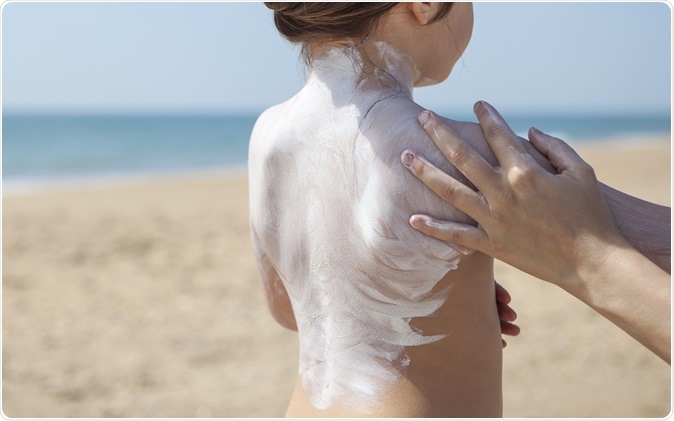A new study from Cancer Council Australia has shown that despite bearing the brunt of the hot sun’s UV rays and being prone to skin cancer, Australians are largely unaware of the protective uses of sunscreen and fail to adopt sunscreen application practices correctly.

Aussies unaware of sun protection rules to prevent skin cancer. Image Credit: Juan Aunion / Shutterstock
The study revealed that most Australians (92 percent) do not know that they need to be protecting themselves from the harsh rays of the sun when the UV levels are three or above. A further 85 percent are unaware of how to use sunscreen correctly the survey notes.
The campaign “slip, slop, slap” means “slipping on protective clothing, slopping on SPF30 or higher, broad spectrum, water resistant sunscreen, slapping on a broadbrimmed hat, seeking shade and sliding on sunglasses” when the UV rays reach 3 at around 10.30 AM.
Heather Walker, chair of Cancer Council's National Skin Cancer Committee explains that all five steps of sun protection should be adopted once the UV levels reach 3 because skin and eyes can be damaged slowly in small installments that can later add up to the skin cancers. She adds that the UV rays are known to be cancer causing or carcinogenic and cause around 95 percent of all melanoma cases in Australia. Melanoma kills around 2000 Australians yearly.
To combat and understand the increasing incidence of sun-caused skin cancers the National Sun Protection Survey has been in place for a long time. It shows that 93 percent of individuals do not know when sun protection was needed in 2013-14. The latest survey in the summers of 2016-17 shows that a quarter of the participants in the survey (24 percent) are under the mistaken belief that they can judge how much damage the sun can cause by the temperatures alone. Another quarter (23 percent) thought cloud cover, winds and humidity could protect them from sun damage. That UV rays from the sun were responsible for the skin damage leading to sunburns was cited by only 39 percent of those who were surveyed.
Experts have explained that UV rays are usually undetectable with the naked eye and thus pose a great danger. They can be checked daily by the daily UV Index charts that come from the Australian Radiation Protection and Nuclear Safety Agency (ARPANSA) or Bureau of Meteorology (BoM). The health experts have warned that this month in Sydney, the UV levels would cross levels 3 between 10.30 AM and 4.30 PM.
On cloudy days, the experts say or at sea beaches, the UV rays may bounce off the clouds or the seas providing with a “double dose” of the harmful UV rays on the skin. Some types of clouds alone can provide actual UV ray cover. The UV ray intensity varies with a lot of factors say ARPANSA experts. These include storms, pollution, cloud cover, bushfires and ozone layer changes. Aerosols and El Nino and La Nina also alter the UV levels significantly. UV index includes values of both UVA and UVB. The latter is responsible for the cancers and the index thus gives a greater weightage to UVB.
Ms Walker says what most people feel is that it is a “warm, lovely, sunny afternoon, I don't need sun protection.” It is scientifically wrong to assume so she says. Outdoor activities should be planned once the UV levels are low she says. According to Professor David Whiteman, who is head of the Cancer Control group at QIMR Berghofer Medical Research Institute and the convenor of the Sunscreen Summit that starts today (19th of March 2018) in Brisbane says public awareness regarding sunscreen use is a challenge.